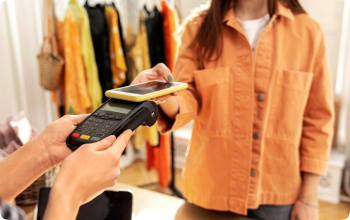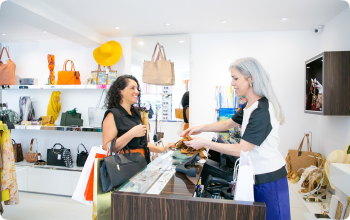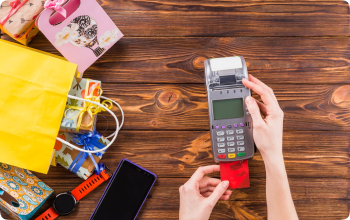
03 Aug, 2025
What is the Store of the Future? 8 Trends to Watch Out For
What Is the Store of the Future? 8 Trends to Watch Out For
Retail is changing fast. As technology evolves and customer expectations shift, stores are no longer just places to buy things—they’re becoming experiences, showrooms, pickup hubs, and data centers all at once. So what does the “store of the future” actually look like?
Here are 8 key trends shaping the future of retail stores—and what they mean for both businesses and shoppers.
1. Hybrid Shopping Experiences
In the store of the future, online and offline shopping won’t be separate—they’ll work together. Customers might browse online, try on in-store, and check out through an app. Others might shop in-store and choose home delivery. Flexibility will be key.
Why it matters:
Shoppers expect convenience across channels. Retailers that blend in-person service with digital tools will stay relevant.
2. Smart Fitting Rooms
Forget the old fitting room. The future brings smart mirrors that show different sizes or colors without leaving the room, lighting controls to simulate environments, and even style suggestions based on what you're trying on.
Why it matters:
It’s about saving time, reducing staff load, and offering a more personalized shopping experience.
3. Cashierless Checkout
Thanks to computer vision, RFID, and mobile apps, more stores are moving toward no-checkout shopping. Think: walk in, grab what you need, and walk out—the payment happens automatically.
Why it matters:
Faster checkout means less friction, shorter lines, and happier customers.
4. AI-Powered Recommendations
Retailers are increasingly using artificial intelligence to suggest products in real time, both online and in-store. Think digital screens that adapt based on customer behavior, or apps that sync with your preferences as you shop.
Why it matters:
Personalized recommendations help boost average order value and improve customer satisfaction.
5. Augmented Reality (AR) and Virtual Try-Ons
With AR, customers can see how furniture looks in their living room or how shoes fit without trying them on. Stores may offer virtual makeup mirrors, home design tools, or mobile AR experiences.
Why it matters:
AR helps customers feel more confident in their purchases, especially for high-consideration or custom items.
6. Experiential Retail
More stores are focusing on creating an experience, not just making a sale. Pop-ups, workshops, live demos, and community spaces are being used to draw people in—even if they don’t buy right away.
Why it matters:
In-person shopping needs to offer something unique that online can’t.
7. Sustainable and Transparent Operations
Shoppers, especially younger ones, care about where products come from and how they’re made. The store of the future will showcase sustainability efforts—through product labeling, eco-friendly materials, and refill stations.
Why it matters:
Transparency builds trust, and eco-conscious practices influence buying decisions.
8. Data-Driven Store Layouts
Using heat maps, motion sensors, and POS analytics, retailers can design stores that guide customer flow more effectively. These insights help determine which products to place where and how to improve the layout.
Why it matters:
Better layouts lead to more engagement, fewer missed sales, and improved customer flow.
Final Thoughts
The store of the future isn’t just about fancy tech. It’s about removing friction, adding value, and making the in-person experience worth showing up for. Businesses that embrace these trends—not just as gimmicks, but as ways to serve real customer needs—will be better positioned for what’s next.
Leave a Comment Here
Your email address will not be published*



0 Comment